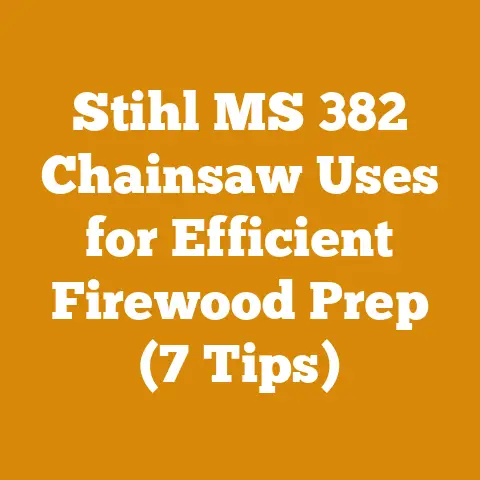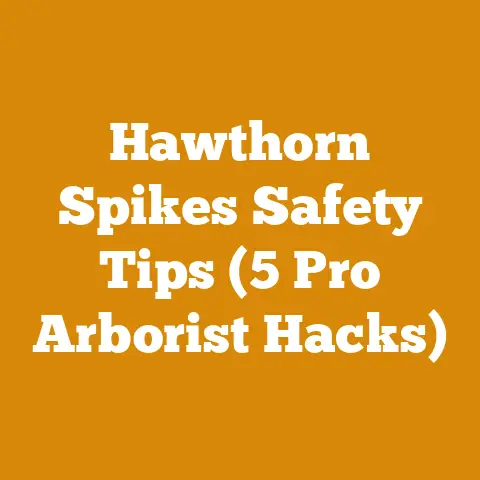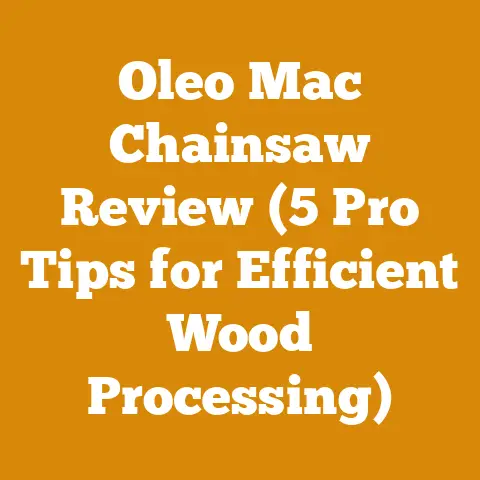Lowe’s Plastic Fencing Tips (Vinyl Post Prep for Woodworkers)
I remember the day I first saw it – a perfectly straight, gleaming white vinyl fence, standing in stark contrast to the gnarly, weathered wood I was used to working with. My initial thought? “Plastic? What’s that doing in my world?” But necessity, as they say, is the mother of invention. A client wanted a fence that was low-maintenance and aesthetically pleasing, and vinyl was the answer. That’s when I plunged into the world of Lowe’s plastic fencing, specifically focusing on how to prep those vinyl posts for woodworkers like myself. It wasn’t as simple as just slapping some wood on plastic, and I learned a lot along the way. Now, I’m sharing that knowledge with you.
We’ll explore everything from understanding vinyl posts to the nitty-gritty of preparing them for wood attachments.
Understanding Vinyl Fencing and Its Benefits
Vinyl fencing has become increasingly popular, and for good reason. It offers several advantages over traditional wood fences, especially regarding maintenance and longevity.
- Low Maintenance: Unlike wood, vinyl doesn’t require painting, staining, or sealing. A simple wash with soap and water is usually enough to keep it looking its best.
- Durability: Vinyl is resistant to rot, insects, and decay, making it a long-lasting option.
- Aesthetics: Vinyl fences come in various styles and colors, offering a clean and modern look.
- Cost-Effectiveness: While the initial cost of vinyl might be higher than wood, its low maintenance and long lifespan can make it a cost-effective choice in the long run.
However, as a woodworker, the biggest challenge with vinyl is its inherent incompatibility with traditional wood joinery. This is where proper preparation becomes crucial.
Identifying the Right Vinyl Post for Your Project
Lowe’s offers a variety of vinyl fence posts, each designed for specific purposes. It’s essential to choose the right post for your project to ensure a strong and stable fence.
- Line Posts: These are used for straight sections of the fence.
- Corner Posts: These are used at the corners of the fence.
- End Posts: These are used at the end of the fence.
- Gate Posts: These are designed to support the weight of a gate.
Each type of post typically varies in size and wall thickness. For example, a gate post will usually be more robust than a line post. When selecting your posts, consider the following:
- Post Size: The size of the post will depend on the height of your fence and the amount of wood you plan to attach. Typically, 4×4 or 5×5 posts are common.
- Wall Thickness: A thicker wall will provide more stability and support, especially if you plan to attach heavy wood elements.
- Post Cap: Choose a post cap that complements the style of your fence.
Takeaway: Selecting the correct vinyl post is critical for the overall structural integrity of your fence.
Essential Tools and Materials for Vinyl Post Prep
Before you start prepping your vinyl posts, gather the necessary tools and materials. Having everything on hand will make the process smoother and more efficient.
- Measuring Tape: For accurate measurements.
- Pencil or Marker: For marking cut lines and drill points.
- Drill with Various Drill Bits: Including bits for drilling through vinyl and wood.
- Screwdriver or Impact Driver: For installing screws.
- Level: To ensure posts are plumb and level.
- Circular Saw or Miter Saw: For cutting wood components.
- Clamps: To hold wood in place while attaching it to the vinyl post.
- Safety Glasses: To protect your eyes from debris.
- Gloves: To protect your hands.
- Vinyl-Safe Screws: These are specifically designed for use with vinyl and won’t cause cracking. Stainless steel screws are also a good option.
- Construction Adhesive (Optional): For added bonding strength between the wood and vinyl.
- Wood Filler (Optional): To fill any gaps or imperfections in the wood.
- Sandpaper (Optional): For smoothing rough edges on the wood.
Key Metric: Ensure your drill bits are sharp and appropriate for both vinyl and wood to prevent splitting or cracking.
Preparing the Vinyl Post for Wood Attachment: A Step-by-Step Guide
This is where the rubber meets the road. Properly preparing your vinyl posts is essential for a secure and aesthetically pleasing connection with your wood elements.
Step 1: Cleaning the Vinyl Post
Start by cleaning the vinyl post with soap and water to remove any dirt, debris, or residue. This will ensure that any adhesive or sealant adheres properly.
- Why it’s important: A clean surface provides a better bonding surface for adhesives and ensures accurate measurements.
Step 2: Measuring and Marking
Accurately measure and mark the areas on the vinyl post where you will attach the wood. Use a measuring tape and a pencil or marker to create clear and precise markings.
- Considerations: Account for the thickness of the wood and any desired spacing between the wood and the top of the post.
- Pro Tip: Double-check your measurements before drilling or cutting. “Measure twice, cut once” applies to vinyl just as much as it does to wood.
Step 3: Drilling Pilot Holes
Drilling pilot holes is crucial to prevent the vinyl from cracking when you drive in screws. Use a drill bit that is slightly smaller than the diameter of your screws.
- Technique: Drill straight and apply even pressure to avoid damaging the vinyl.
- Spacing: Space your pilot holes evenly, typically every 6-12 inches, depending on the size and weight of the wood you’re attaching.
Step 4: Attaching the Wood to the Vinyl Post
Now it’s time to attach the wood to the vinyl post. Use vinyl-safe screws or stainless steel screws to avoid damaging the vinyl.
- Technique: Drive the screws in slowly and evenly to prevent cracking the vinyl.
- Clamping: Use clamps to hold the wood in place while you drive in the screws. This will ensure a tight and secure connection.
- Adhesive (Optional): For added bonding strength, apply a bead of construction adhesive to the back of the wood before attaching it to the vinyl post.
- Screw Depth: Ensure the screws are long enough to penetrate the wood securely but not so long that they protrude through the other side of the vinyl post.
Step 5: Finishing Touches
Once the wood is attached, inspect the connection for any gaps or imperfections.
- Wood Filler (Optional): Fill any gaps or imperfections in the wood with wood filler.
- Sanding (Optional): Smooth any rough edges on the wood with sandpaper.
- Sealing/Painting (Optional): If desired, seal or paint the wood to protect it from the elements and enhance its appearance.
Takeaway: Careful measurement, precise drilling, and the use of appropriate screws are essential for a successful wood-to-vinyl connection.
Choosing the Right Wood for Your Vinyl Fence Project
The type of wood you choose will significantly impact the overall look and durability of your fence.
- Pressure-Treated Wood: This is a popular choice for fences because it is resistant to rot, insects, and decay. However, it can be more expensive than other types of wood.
- Cedar: Cedar is a naturally durable wood that is resistant to rot and insects. It also has a beautiful reddish-brown color.
- Redwood: Redwood is another naturally durable wood that is resistant to rot and insects. It has a similar color to cedar but is often more expensive.
- Pine: Pine is a less expensive option, but it is not as durable as pressure-treated wood, cedar, or redwood. It will require regular maintenance to prevent rot and insect damage.
Wood Type Specification: For optimal longevity, I recommend using pressure-treated lumber rated for ground contact for any parts of the wood structure that will be close to the ground.
Addressing Common Challenges and Mistakes
Working with vinyl and wood together can present some unique challenges. Here are some common mistakes to avoid:
- Using the Wrong Screws: Using screws that are not designed for vinyl can cause cracking and damage. Always use vinyl-safe screws or stainless steel screws.
- Over-Tightening Screws: Over-tightening screws can also cause the vinyl to crack. Drive the screws in slowly and evenly until they are snug but not too tight.
- Not Drilling Pilot Holes: Skipping the pilot hole step is a recipe for disaster. Drilling pilot holes is essential to prevent the vinyl from cracking.
- Inaccurate Measurements: Inaccurate measurements can lead to misaligned wood and an unprofessional-looking fence. Double-check your measurements before drilling or cutting.
- Ignoring Expansion and Contraction: Wood and vinyl expand and contract at different rates. Leave a small gap between the wood and the vinyl to allow for expansion and contraction. This will prevent the wood from putting undue stress on the vinyl.
Case Study: I once had a client who insisted on using regular wood screws with his vinyl fence. Within a year, the vinyl posts were riddled with cracks. We had to replace the entire fence, costing him significantly more than if he had just used the correct screws in the first place.
Advanced Techniques for Wood Attachment
For more complex projects, you might need to explore some advanced techniques for attaching wood to vinyl posts.
- Using Brackets: Metal brackets can provide a strong and secure connection between the wood and the vinyl post. These brackets can be attached to the vinyl post with screws and then to the wood with screws or bolts.
- Creating Mortise and Tenon Joints (with Modifications): While traditional mortise and tenon joints are not directly applicable to vinyl, you can adapt the concept. Create a shallow mortise in the wood and use adhesive and screws to secure it to the vinyl post.
- Concealing Fasteners: For a more aesthetically pleasing look, you can conceal the fasteners by using wood plugs or by countersinking the screws and filling the holes with wood filler.
Original Insight: When using brackets, choose stainless steel or powder-coated brackets to prevent rust and corrosion.
Maintaining Your Wood and Vinyl Fence
Once your fence is installed, regular maintenance is essential to keep it looking its best.
- Cleaning: Clean the vinyl fence with soap and water regularly to remove any dirt, debris, or mildew.
- Sealing/Staining the Wood: Seal or stain the wood every few years to protect it from the elements.
- Inspecting for Damage: Regularly inspect the fence for any signs of damage, such as cracks, loose screws, or rot. Repair any damage promptly to prevent it from getting worse.
- Tightening Screws: Check the screws regularly and tighten them as needed.
Equipment Maintenance Schedule: I recommend inspecting your fence at least twice a year – once in the spring and once in the fall.
Safety Considerations When Working with Vinyl and Wood
Safety should always be your top priority when working with any tools or materials.
- Wear Safety Glasses: Always wear safety glasses to protect your eyes from debris.
- Wear Gloves: Wear gloves to protect your hands from splinters and cuts.
- Use Proper Tools: Use the right tools for the job and make sure they are in good working condition.
- Work in a Well-Ventilated Area: When working with adhesives or sealants, work in a well-ventilated area to avoid inhaling harmful fumes.
- Be Aware of Underground Utilities: Before digging any holes, be sure to check for underground utilities.
Best Practice: Always consult with local building codes and regulations before starting any fence project.
Cost Analysis: Wood vs. Vinyl Fencing
Let’s break down the cost implications of choosing wood versus vinyl fencing, particularly considering the long-term perspective.
- Initial Cost: Wood fencing typically has a lower upfront cost than vinyl fencing. The cost of wood will vary depending on the type of wood you choose.
- Installation Cost: Installation costs can be similar for both wood and vinyl fencing, depending on the complexity of the project and the labor rates in your area.
- Maintenance Cost: This is where vinyl fencing shines. Wood fencing requires regular maintenance, such as painting, staining, and sealing, which can add up over time. Vinyl fencing requires minimal maintenance.
- Lifespan: Vinyl fencing typically has a longer lifespan than wood fencing. A well-maintained vinyl fence can last for 20-30 years, while a wood fence may only last for 10-15 years.
Actionable Metrics: Calculate the total cost of ownership for both wood and vinyl fencing over a 20-year period to see which option is more cost-effective in the long run.
Environmental Considerations
It’s important to consider the environmental impact of your fencing choices.
- Wood: Wood is a renewable resource, but it’s important to choose wood that is sustainably harvested. Look for wood that is certified by the Forest Stewardship Council (FSC).
- Vinyl: Vinyl is a plastic material that is not biodegradable. However, it can be recycled. Look for vinyl fencing that is made from recycled materials.
Friendly, Approachable Language: Consider the source of your materials. Choosing sustainably sourced wood or recycled vinyl can help reduce your environmental footprint.
Creative Design Ideas for Combining Wood and Vinyl
Now, let’s explore some creative ways to combine wood and vinyl in your fence design.
- Vinyl Posts with Wood Rails: Use vinyl posts for their low maintenance and durability, and then use wood rails for a more natural look.
- Wood Accents on Vinyl Fence: Add wood accents, such as a wood gate or wood trim, to a vinyl fence to create a unique and visually appealing design.
- Mixed Material Fence: Create a fence that is half wood and half vinyl. For example, you could use wood for the bottom half of the fence and vinyl for the top half.
Compelling Phrase: Let your creativity guide you! Combining wood and vinyl can result in a stunning and personalized fence design.
Troubleshooting Common Vinyl Fence Problems
Even with proper preparation and installation, you may encounter some problems with your vinyl fence over time. Here are some common problems and how to fix them:
- Cracked Vinyl: Cracked vinyl can be caused by impact, over-tightening screws, or extreme temperature changes. Small cracks can be repaired with vinyl repair kits. Larger cracks may require replacing the damaged section of the fence.
- Loose Screws: Loose screws can be caused by vibration or expansion and contraction. Tighten the screws regularly to prevent them from becoming loose. If the screw holes are stripped, you may need to use larger screws or fill the holes with wood filler and re-drill them.
- Sagging Fence: A sagging fence can be caused by loose posts or damaged rails. Tighten the posts and replace any damaged rails.
- Discoloration: Vinyl fences can become discolored over time due to exposure to the sun and weather. Clean the fence regularly with soap and water to remove any dirt or mildew. Stubborn stains can be removed with a vinyl cleaner.
Expert Advice: Prevention is key. Regular maintenance and inspections can help you identify and address problems before they become major issues.
The Future of Wood and Vinyl Fencing
As technology advances, we can expect to see even more innovative ways to combine wood and vinyl in fencing.
- New Materials: Researchers are developing new materials that combine the best properties of wood and vinyl, such as wood-plastic composites.
- Improved Fasteners: New types of fasteners are being developed that are specifically designed for use with vinyl and wood, providing a stronger and more secure connection.
- Smart Fences: In the future, we may see fences that are equipped with sensors that can detect damage, monitor weather conditions, and even provide security alerts.
Focus on Delivering Practical Value: Stay informed about the latest advancements in fencing technology to make informed decisions about your next fence project.
Conclusion: Mastering the Art of Wood-to-Vinyl Connections
Working with Lowe’s plastic fencing, specifically vinyl posts, and integrating them with wood elements can seem daunting at first. However, by understanding the properties of vinyl, using the right tools and techniques, and paying attention to detail, you can create a beautiful and durable fence that combines the best of both worlds. Remember the story I started with? That initial skepticism turned into a deep appreciation for the versatility of vinyl, especially when paired with the timeless beauty of wood. So, embrace the challenge, experiment with different designs, and don’t be afraid to get your hands dirty. The result will be a fence that not only enhances your property but also reflects your creativity and craftsmanship. Now, go forth and build!






